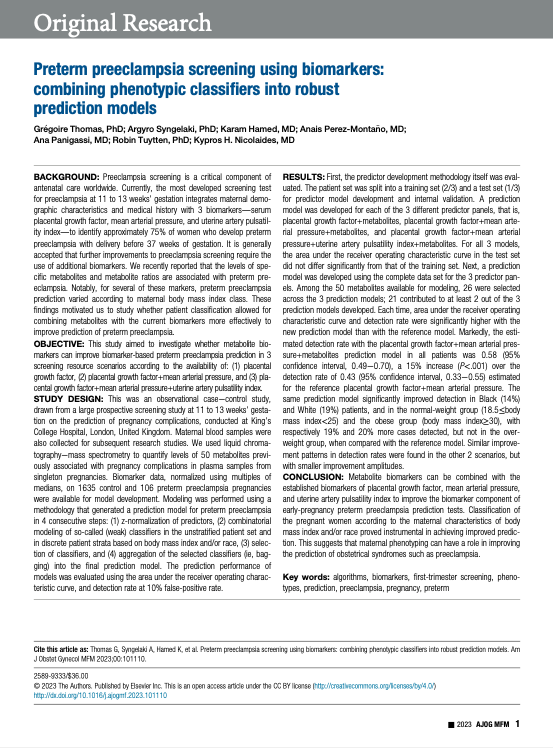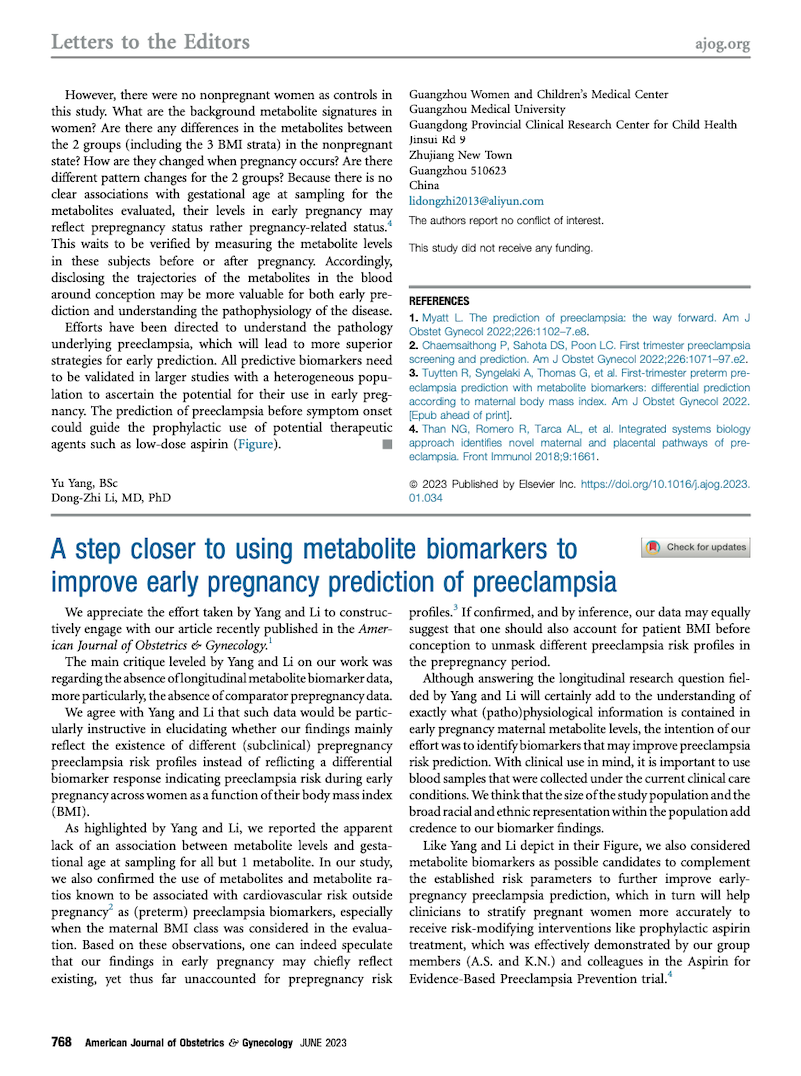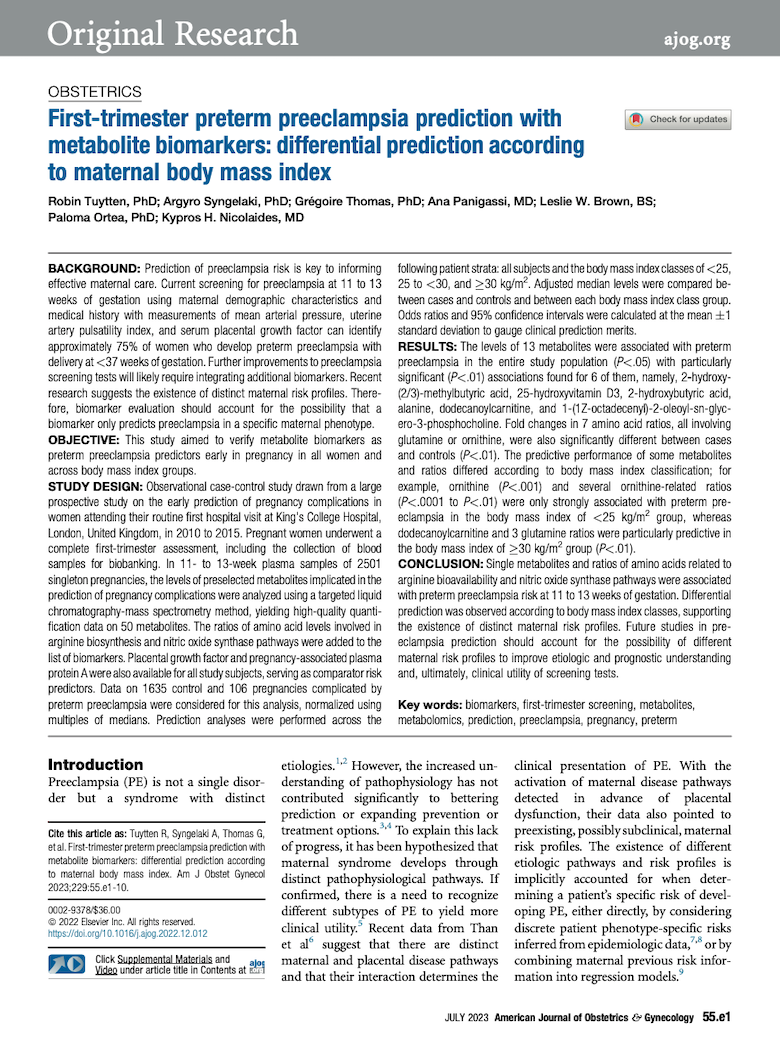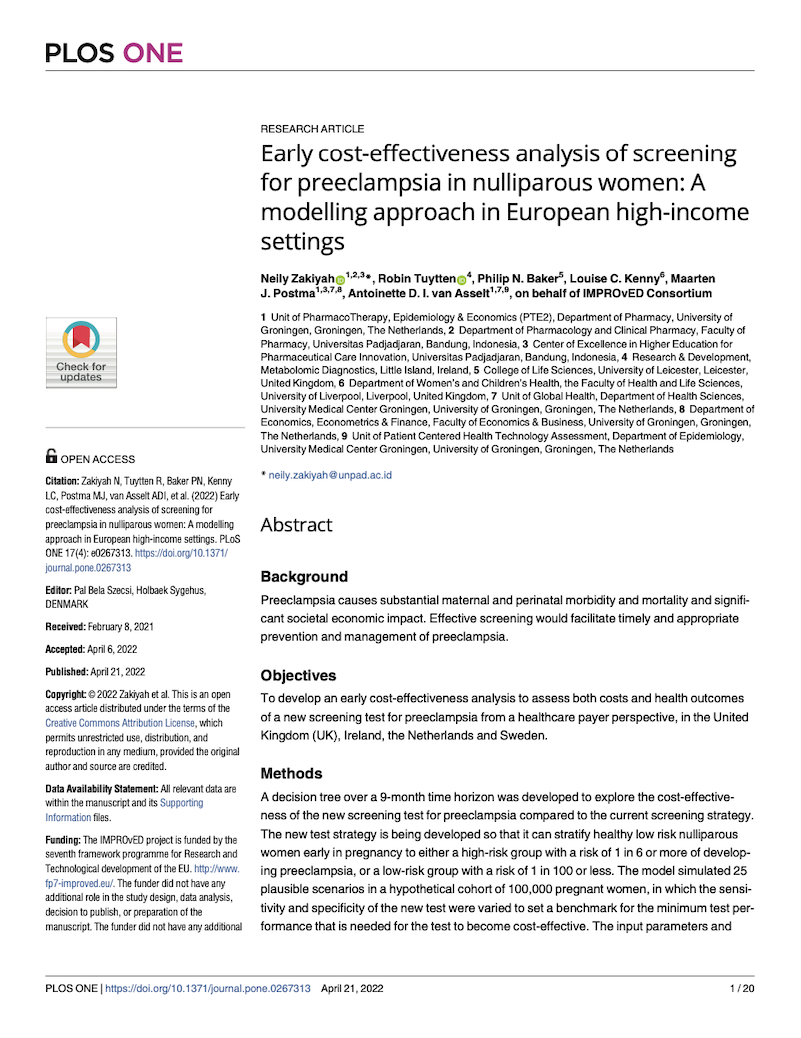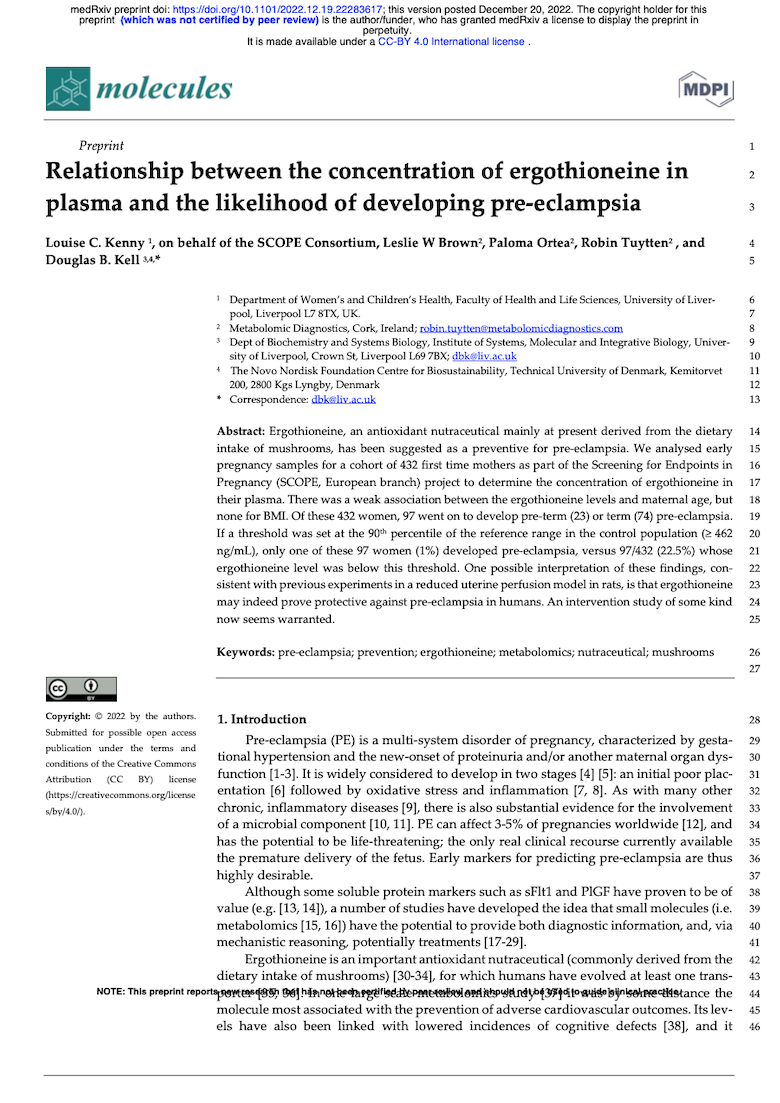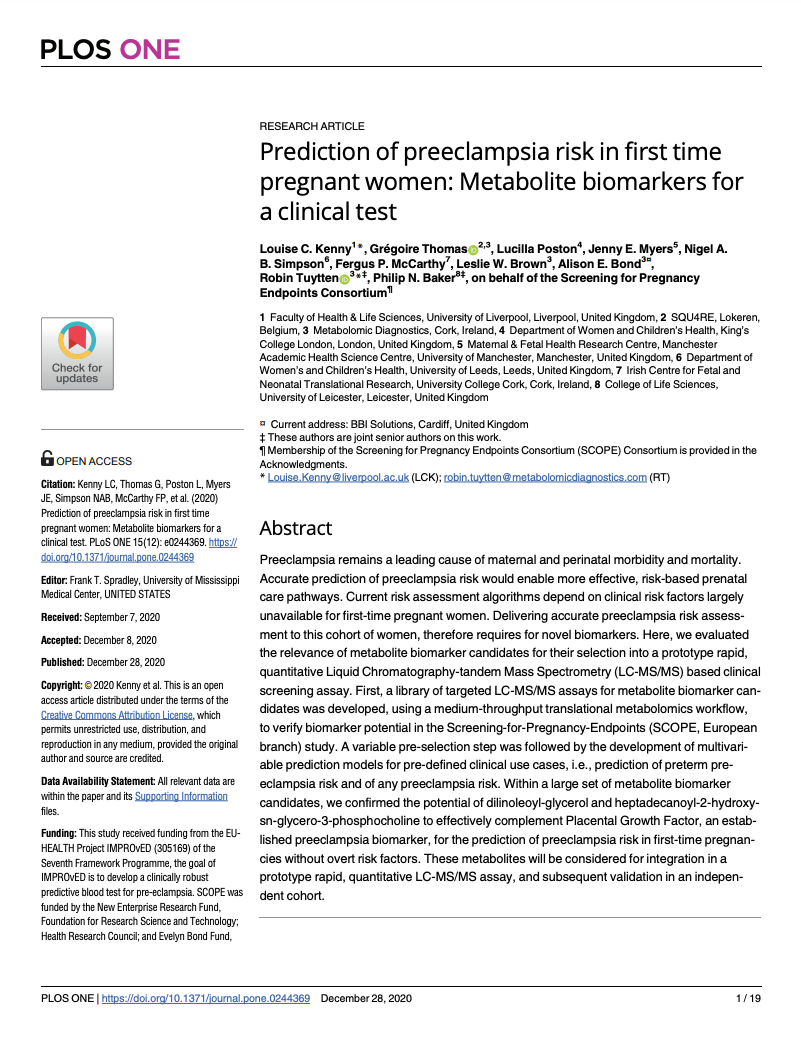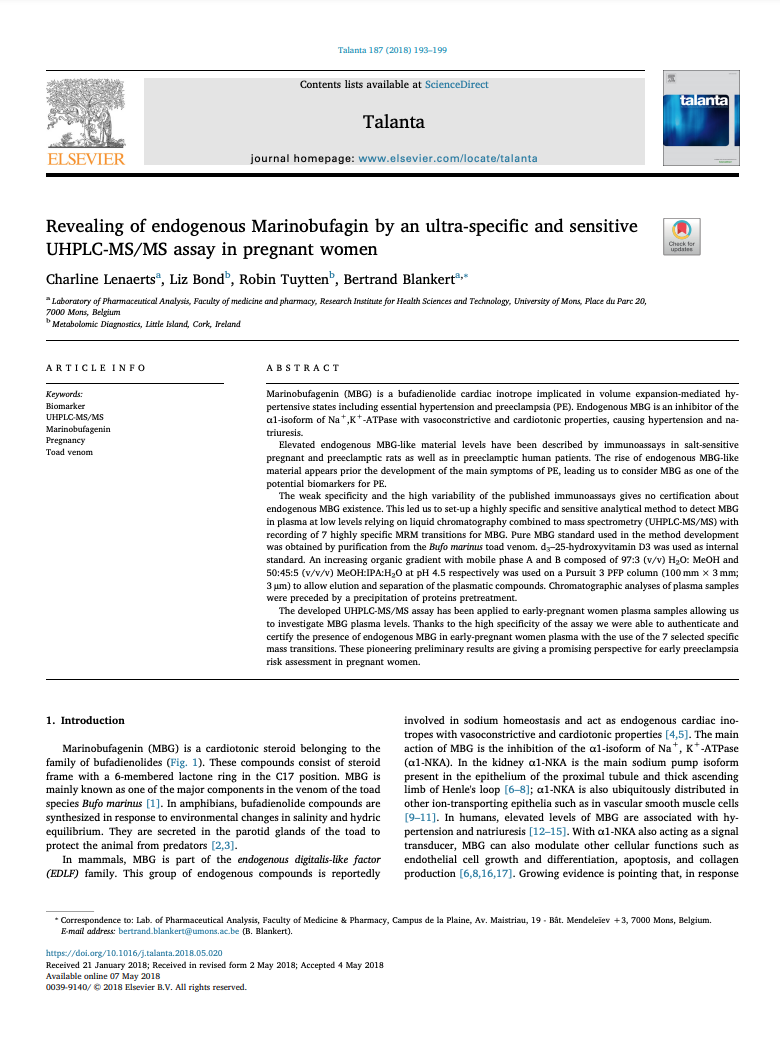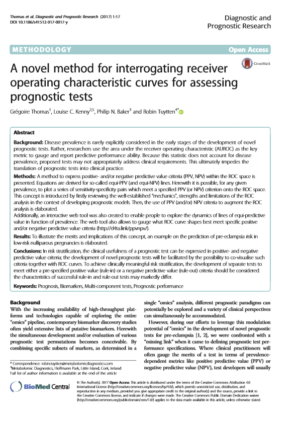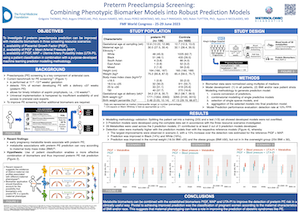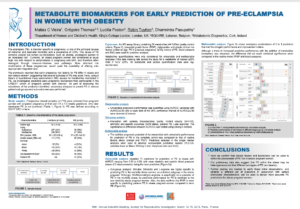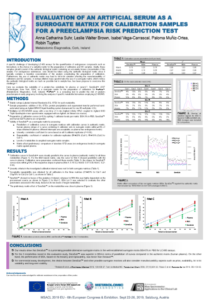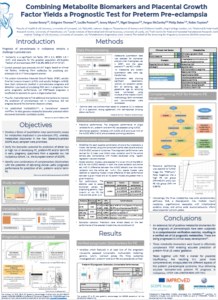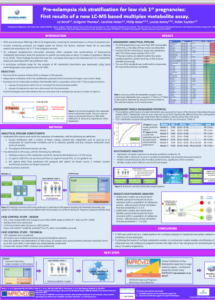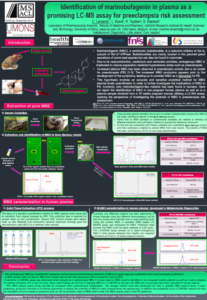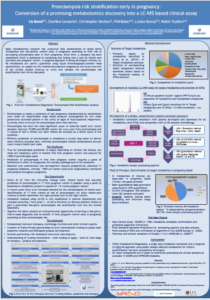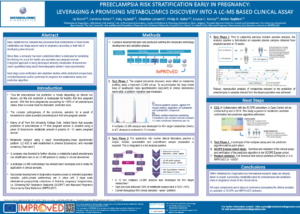Research Papers
Preterm preeclampsia screening using biomarkers: combining phenotypical classifiers into robust prediction models
Gregoire Thomas, PhD; Argyro Syngelaki, PhD; Karam Hamed, MD; AnaisPerez-Montano, MD; Ana Panigassi, MD; RobinTuytten, PhD; Kypros H.Nicolaides, MD
American Journal of Obstetrics & Gynecology - MFM, 2023
A step closer to using metabolite biomarkers to improve early pregnancy prediction of preeclampsia
R Tuytten, A Syngelaki, G Thomas, KH Nicolaides
American Journal of Obstetrics & Gynecology, 2023
First Trimester Preterm Preeclampsia Prediction with Metabolite Biomarkers: Differential Prediction According to Maternal Body Mass Index.
R Tuytten, A Syngelaki, G Thomas, A Panigassi, LW Brown, P Ortea
American Journal of Obstetrics and Gynecology, 2022
Early cost-effectiveness analysis of screening for preeclampsia in nulliparous women: A modelling approach in European high-income settings
N Zakiyah, R Tuytten, PN Baker, LC Kenny, MJ Postma, ADI van Asselt
Plos one,2022
Relationship between the concentration of ergothioneine in plasma and the likelihood of developing pre-eclampsia
LC Kenny, SCOPE Consortium, LW Brown, P Ortea, R Tuytten, DB Kell
medRxiv, 2022
Prediction of preeclampsia risk in first time pregnant women
We’re pleased to announce that “Prediction of preeclampsia risk in first time pregnant women: Metabolite biomarkers for a clinical test” has been published recently
Revealing of endogenous Marinobufagin by an ultra-specific and sensitive UHPLC-MS/MS assay in pregnant women
A dedicated MBG LC-MS method to detect and identify MBG in pregnant women plasma samples was developed. The presence of endogenous marinobufagenin in pregnant women was confirmed due to the high specificity of the distinct 7 mass transitions used in this LC-MS/MS assay.
A novel method for Interrogating receiver operating characteristic curves for assessing prognostic tests
A method to express positive and/ or negative predictive value (PPV/NPV) criteria within the ROC space is presented. An example on the prediction of preeclampsia risk in low-risk nulliparous pregnancies is elaborated
Posters
Preterm Preeclampsia Screening: Combining Phenotypic Biomarker Models into Robust Prediction Models
To investigate if preterm preeclampsia prediction can be improved with metabolite biomarkers in three screening resource scenarios
Metabolite Biomarkers for early prediction of preeclampsia in women with obesity
Predictive early pregnancy biomarkers were investigated in the UPBEAT cohort using a library of quantitative mass spectrometry assays for metabolites implicated in PE.
Evaluation of an artificial serum as a surrogate matrix for calibration samples for a preeclampsia risk predictor test
We evaluated the suitability of a protein free substitute for plasma or serum, Serasub™ as a surrogate matrix for the preparation of calibrators for PrePsia™ – a screening test to predict the risk of preterm preeclampsia in early pregnancy.
Combining metabolite biomarkers and placental growth factor yields a prognostic test for pre-term preeclampsia
A number of prognostic metabolites were verified and found to effectively complement PIGF enabling accurate prediction of pre-term PE in the nulliparous at 15 weeks’ gestation
Preeclampsia risk stratification for low risk 1st pregnancy: First results of a new LC/MS based multiplex metabolite assay
A prototype LC/Ms assay was confirmed as a viable platform for the multiplex analysis of metabolite biomarker relevant to the prediction of preeclampsia. Stratification of low risk nulliparous pregnant women into high or low risk groups for preeclampsia at 15 weeks gestation was possible in multimarker models.
Identification of Marinobufagenin in plasma as a promising LC-MS assay for preeclampsia risk assessment
A sensitive LC-MS assay was developed which allowed the authentication of MBG in human plasma. This method, once fully developed, will help quantify MBG plasma levels in early pregnancy as these levels increase with the manifestation of preeclampsia.
Preeclampsia risk stratification early in pregnancy: conversion of a promising metabolomic discovery into a LC-MS based clinical assay
A single step metabolite extraction and a targeted LC-QqQ-MS approach using stable isotope labelled metabolites for relative quantification is described for preeclampsia prediction.
Preeclampsia Risk Stratification Early in Pregnancy: Leveraging a promising metabolomic discovery into a LC/MS based clinical assay
A promising metabolite panel for preeclampsia risk prediction early in pregnancy has been identified and developed into a prototype LC/MS based prototype clinical assay
Collaboration Research
Mass Spectrometry Translational Research
Whether you have an academic or commercial project which involves mass spectrometry-based translational research or the development of mass spectrometry-based diagnostic solutions, the Metabolomic Diagnostics team is available for advice and collaboration.
Video Content
RTE's Science Squad: Preeclampsia Video
Proof of Concept: SARS-CoV-2 protein detection by LC-MS/MS

